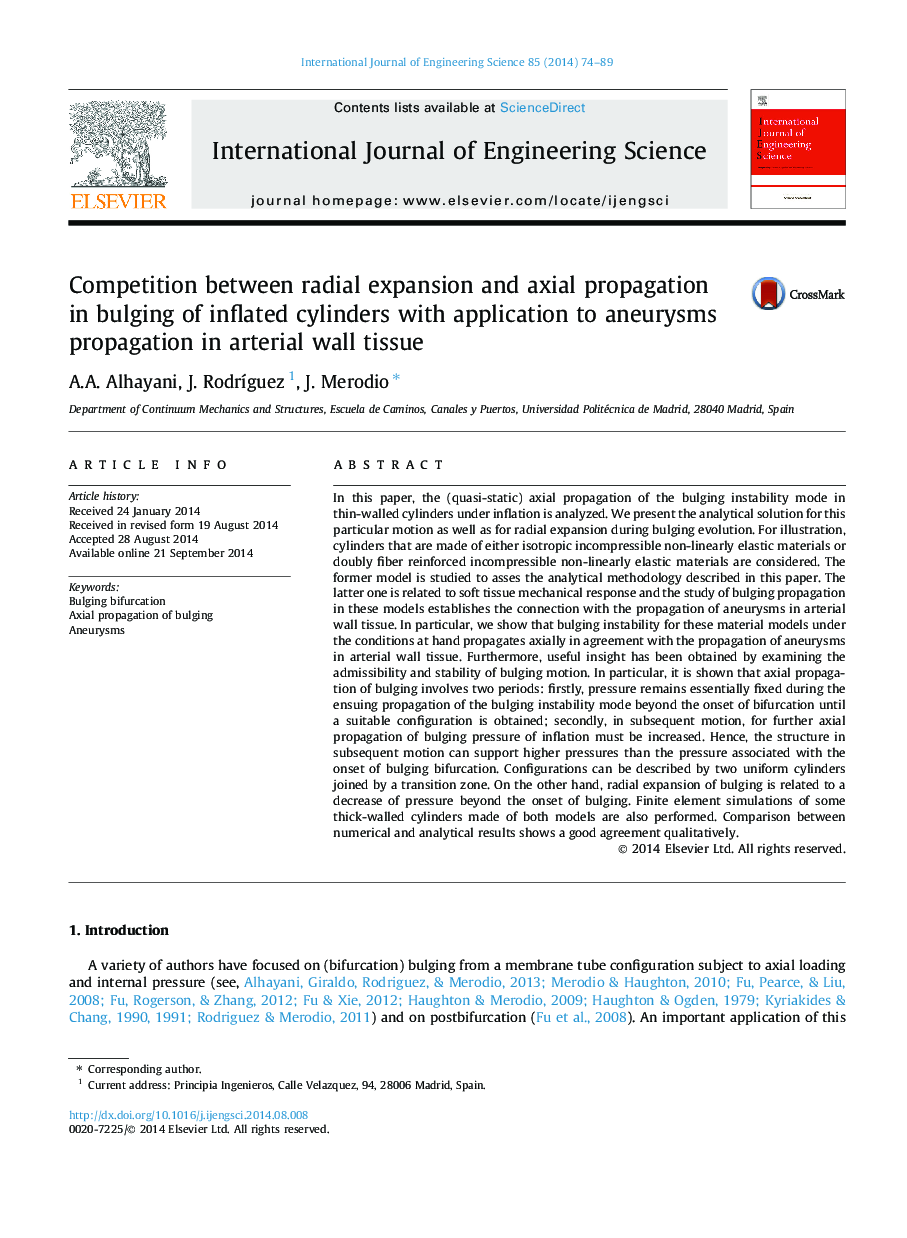| Article ID | Journal | Published Year | Pages | File Type |
|---|---|---|---|---|
| 824811 | International Journal of Engineering Science | 2014 | 16 Pages |
In this paper, the (quasi-static) axial propagation of the bulging instability mode in thin-walled cylinders under inflation is analyzed. We present the analytical solution for this particular motion as well as for radial expansion during bulging evolution. For illustration, cylinders that are made of either isotropic incompressible non-linearly elastic materials or doubly fiber reinforced incompressible non-linearly elastic materials are considered. The former model is studied to asses the analytical methodology described in this paper. The latter one is related to soft tissue mechanical response and the study of bulging propagation in these models establishes the connection with the propagation of aneurysms in arterial wall tissue. In particular, we show that bulging instability for these material models under the conditions at hand propagates axially in agreement with the propagation of aneurysms in arterial wall tissue. Furthermore, useful insight has been obtained by examining the admissibility and stability of bulging motion. In particular, it is shown that axial propagation of bulging involves two periods: firstly, pressure remains essentially fixed during the ensuing propagation of the bulging instability mode beyond the onset of bifurcation until a suitable configuration is obtained; secondly, in subsequent motion, for further axial propagation of bulging pressure of inflation must be increased. Hence, the structure in subsequent motion can support higher pressures than the pressure associated with the onset of bulging bifurcation. Configurations can be described by two uniform cylinders joined by a transition zone. On the other hand, radial expansion of bulging is related to a decrease of pressure beyond the onset of bulging. Finite element simulations of some thick-walled cylinders made of both models are also performed. Comparison between numerical and analytical results shows a good agreement qualitatively.
